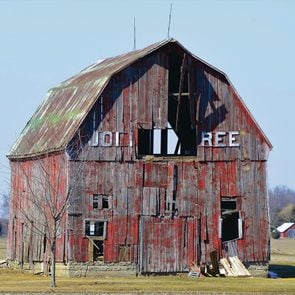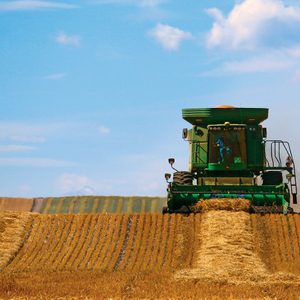Preparing Field Meals For Our Farm Family is a Cherished Tradition
Farming has changed a lot over four generations, but to me, it’s important that the tradition of feeding those who feed the rest of us remains the same.
My mother married a farmer: my father. A tenet spoon-fed to my sister and me along with our baby cereal was “Don’t marry a farmer!” Long hours, no sick days, income dependent on the weather, little to no holiday time—Mother’s list was extensive. So what did I do? I married a farmer.
Perfecting the art of field meals
One of my tasks during seeding and harvest time is to take meals to the field. On paper, it doesn’t sound like such an arduous undertaking. I admit that when I first started taking the odd meal to the field, the offerings were uninspired. My husband jokes that during one harvest season, all he ever ate for lunch were Pizza Pops. He isn’t wrong. Working part-time off the farm and caring for our two small, very busy sons meant that planning a gourmet feast that would transport easily was out of the question. My husband’s options were pretty much take it or leave it. That’s why my mother-in-law was primarily in charge of field cuisine.
I marvelled at the ease with which she managed the job. Field meals were delicious, desserts were even better and time was actually taken to sit down and eat. Lawn chairs were set up, a buffet was laid out on a truck tailgate and my father-in-law would allot a half-hour from a busy day to mealtime. My husband, who is more of a “Gimme the lunch bag so I can get going” kind of guy, likely chafed at the enforced inactivity, but my father-in-law was wise and knew the value of taking a break during those stressful, deadline days.
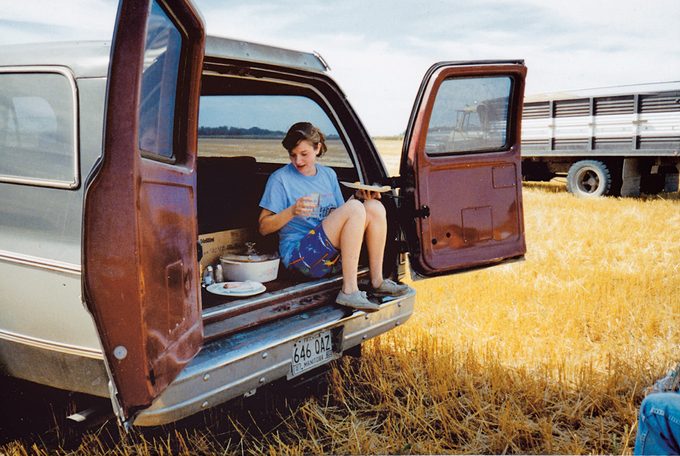
The passage of time has meant that I’m now responsible for field meals. Sadly, lawn-chair lunches are a thing of the past, but with the children now grown, I have more opportunity to experiment with food choices. Of course, some elements always need to be considered when planning meals to be eaten aboard farm equipment. The ideal field meals need to be portable and to be able to be eaten using only one hand—without falling apart or without falling off a fork when shovelled in. Cappelletti casserole? A sure winner. Barbecued bacon cheeseburgers? Full marks. As for other options—well, I can now say with absolute certainty that a hot chicken pot pie on a 37-plus degree day was a mistake. That’s when the bologna sandwich and bottle of water would have been the more prudent choice.
A well-oiled machine?
We’ve had some notable mishaps with field meals over the years. For one, timing is everything when hauling meals to the field. Depending on where my husband and older son are working, it may mean setting out at 11:30 a.m. in order to arrive punctually at noon—though there’s no guarantee anyone will be there to pick up lunch. They could be working at the other end of the quarter section while I wait, my brilliant culinary offering growing cold despite the microwave-heated Magic Bag trying to keep it warm—and yes, I know the manufacturer didn’t intend for it to be used in this fashion!
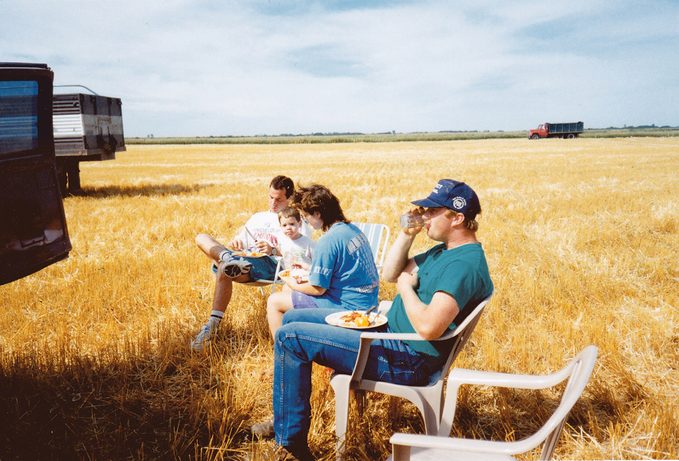
In another instance, my younger son was tasked with taking some chicken burgers to his father. In my hurry, I forgot to put the burgers in an insulated bag, so, wrapped in tinfoil, they rode to the field on the hot dash of the truck. The trouble came when my son took a corner too sharply and the burgers sailed out through the open window, giving a whole new meaning to “fast food.” They actually survived the initial impact—but one of them was no match for a rear tire. My husband was presented with one dusty and dented burger, along with a battered object that resembled a foil-wrapped CD. But, being practical and hungry, he ate them both.
Another time, in a spectacular display of meal mismanagement, I accidentally set the microwave timer for too long, got busy filling containers and packing lunch bags, and roasted a Magic Bag beyond salvation. The stench was indescribable.
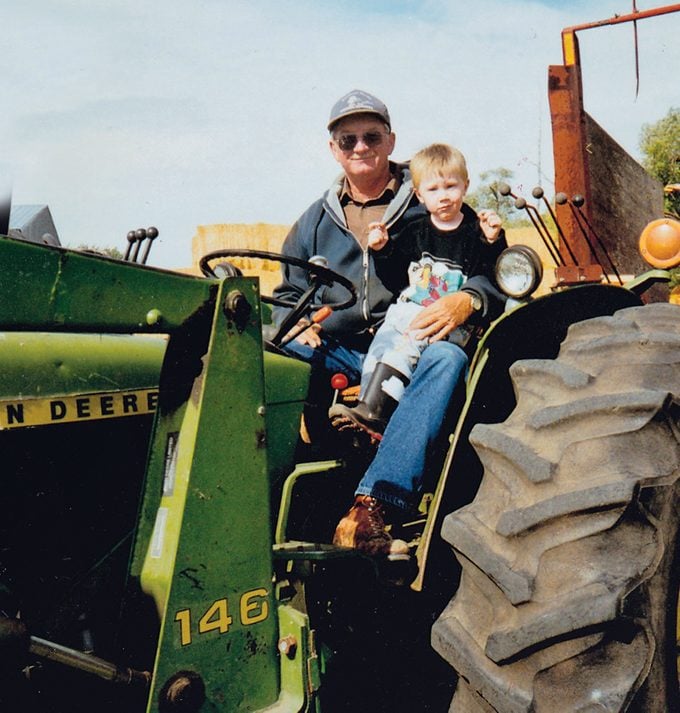
Collecting lunch supplies after a long day can also be a challenge. One never knows in which piece of equipment the bags might end up; and there’s no guarantee that, despite sending out four reusable containers, all four will be returned. Sometimes, carriers end up in grain trucks, tossed into the back seats of half-tons or wedged under tractor seats. And there’s no cleaner on the market up to the task of disinfecting a sealed container of half-eaten lasagna after a week of being bounced around in summer heat. Those receptacles are simply considered lost in the line of duty, given their due respect…and tossed into a burning barrel.
Field meals are a cherished tradition
Seeding and harvest. Planting and reaping. These are but two of the many seasons in the grain-and-cattle-farming year. Despite the occasional blunder on my end, I really do enjoy being a part of those two seasons, even if in just a small way.
Today, my older son is a fourth-generation farmer. Born five months before the end of the life of the great-grandfather whose surname he bears, he only vaguely remembers the days of lawn-chair lunches, when he would go with Gramma to the field, sit in the back of the truck and snitch cookies, and crawl onto Papa’s knee and listen to the morning’s stories.
Many aspects of agriculture have changed over those four generations—but to me, it’s important that the tradition of feeding those who feed the rest of us remains the same.
Next, check out a stunning gallery showcasing the Canadian Prairies.

